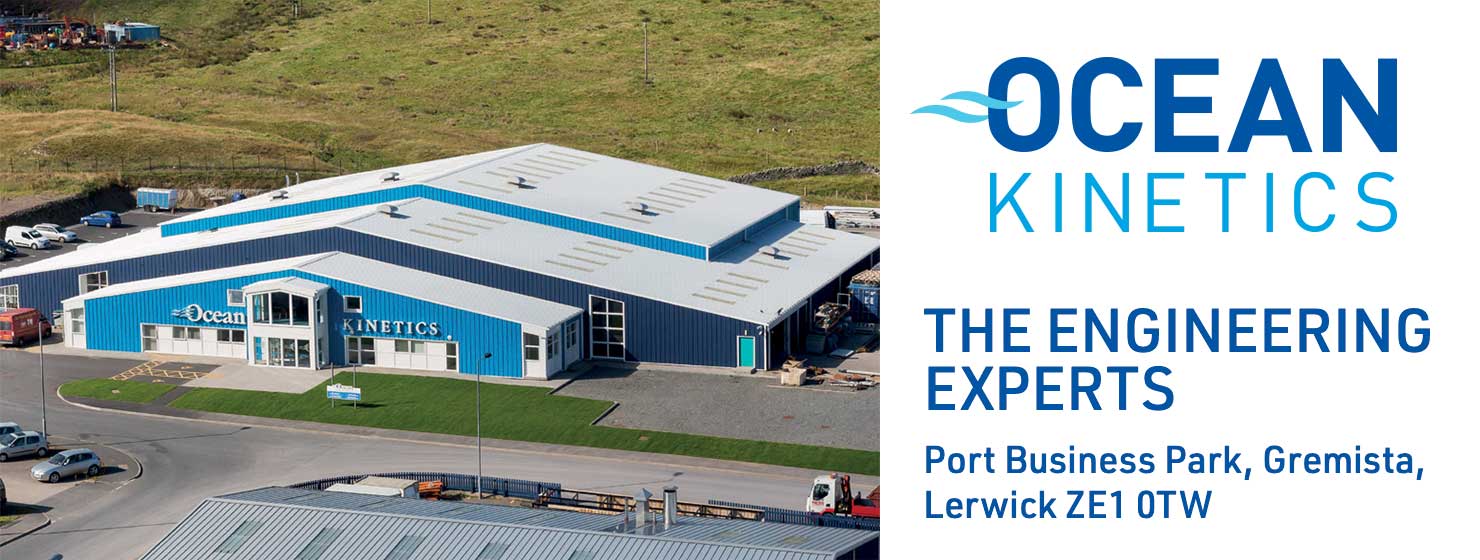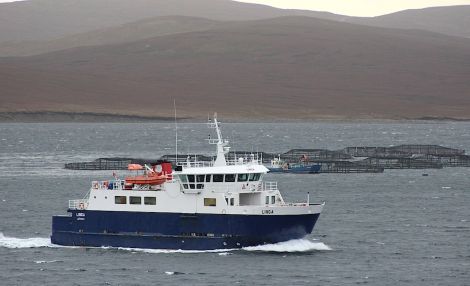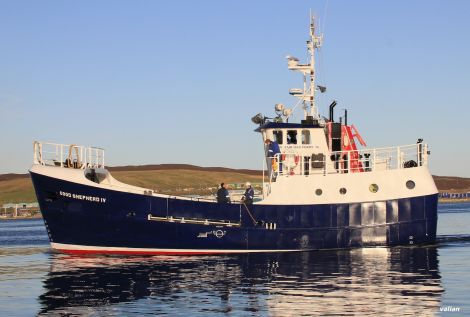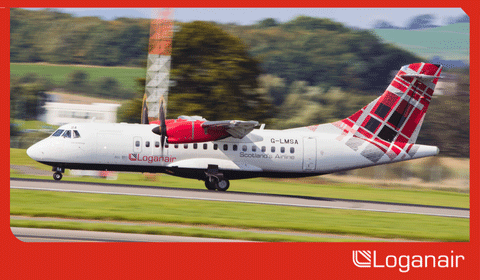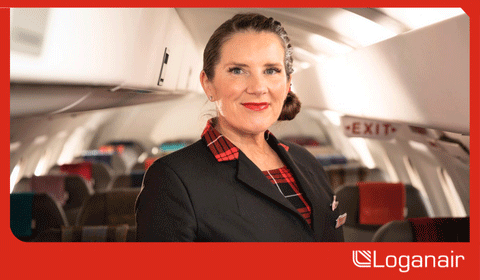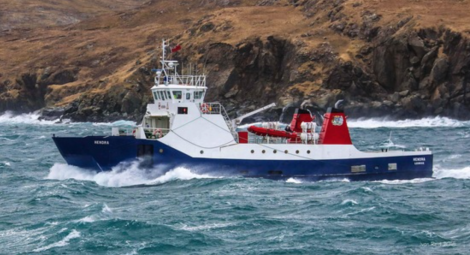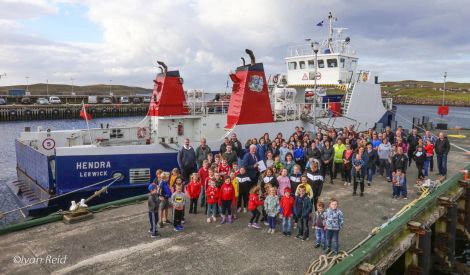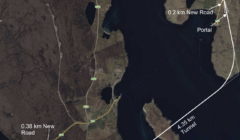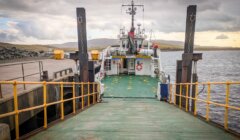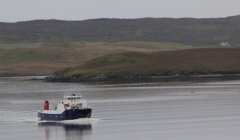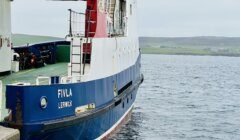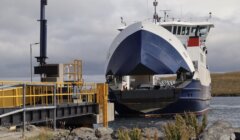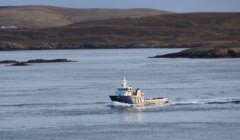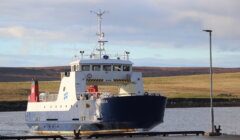Transport / Ferry proposals presented to councillors
A replacement ferry for Fair Isle and an overhaul of the Whalsay route have been suggested
A VISION of how some of Shetland’s inter-island ferry services could look in the future was presented to councillors on Wednesday when consultants provided an update on their ongoing review into the council’s transport.
A new monohull vessel for Fair Isle, in addition to associated improvements the island’s harbour as well Grutness, has been selected as the preferred option to replace the existing Good Shepherd.
With a total estimated base capital cost of £18.5 million, Shetland Islands Council would use an outline business case on the project in discussions with the Scottish Government over funding of inter-island transport.
Consultants Peter Brett Associates and Mott MacDonald have also come up with two preferred options for changes to the Whalsay ferry route.
One would see the creation of a new terminal at Bonydale on the east coast of the Shetland mainland and the mothballing of Laxo and Vidlin, greatly reducing the travelling time, as well as the purchase of two like-for-like replacement ferries.
The other option is to replace Whalsay’s two ferries with larger 45 metre vessels, redevelop the existing Laxo and Vidlin terminals and move the Whalsay terminal from Symbister to North Voe.
These options would come with an estimated capital bill of £45 million and £52 million respectively, and they would also involve government talks.
While councillors noted the updates on the projects, they also agreed to prioritise securing a position on capital funding from the Scottish Government to deliver the ferries and infrastructure for Fair Isle and Whalsay, as well as securing ‘fair funding’ that covers the full deficit from current levels of the ferry service.
The aim of the council at the moment is to secure all necessary funding for inter-island transport services and infrastructure from the Scottish Government.
Become a member of Shetland News
The detail of costs and funding will be presented in detail later down the line in the financial components of the individual business cases, which would need to be approved by the council.
Stephen Canning of Peter Brett Associates told Wednesday’s meeting of the full council that around two thirds of Fair Isle residents said the existing ferry service prevented them from getting to the mainland more often.
There have been issues over reliability of the sailings in inclement weather, as well as capacity and comfort of the Good Shepherd.
The consultants’ preferred option of a new £3 million 24m monohull boat would keep passenger capacity to 12, but it would offer faster sailing times – depending on the sea state – as well as better reliability.
It would continue to see the vessel stationed in Fair Isle, and it would also introduce ro-ro capability with a link span, replacing the existing crane system.
Changes to infrastructure at Fair Isle would include a solid quay formed in addition to a new pier and slipway, as well as a layer of rock armour.
It is also proposed that the pier at Grutness in the south mainland, where the Fair Isle ferry berths, would be extended.
South mainland councillor Allison Duncan questioned if any work had been done to consider the Fair Isle ferry travelling only to Lerwick, citing difficulties the Good Shepherd sometimes has in tying up at Grutness due to swell.
The meeting was told that the community’s preference is to continue using Grutness, with some concerns over crew potentially being stuck in Lerwick when the weather changes due to the longer sailing time.
Councillors were also told that the current Fair Isle ship master often phones up a local resident at Grutness to check on the conditions – a somewhat basic measure which could be replaced by CCTV in the future.
South end member Robbie McGregor asked if the proposed new vessel would have less difficulty in berthing at Grutness, with the councillor told that it would “certainly aid the reliability”.
While the Fair Isle business case is well advanced, the Whalsay study is less detailed, mainly because a long-mooted idea to relocate the mainland port to Bonydale on the east of Shetland – which could cut the journey to Whalsay from half an hour to around eight minutes – resurfaced in the community.
Councillors were told that the case for change in Whalsay related to frequency and capacity, with the number of weekend sailings and vehicle space at peak points during the week raising concern.
Canning noted that the Hendra is an ageing vessel, while the sailing to Laxo can be prone to disruption.
He said the Bonydale idea could provide “quite a significant range of benefits”, with quicker journeys meaning frequency could be increased.
Replacements for the Hendra and Linga were also raised, but it was said that a larger vessel – potentially 45m long – would be unlikely to dock at Symbister harbour as difficulty in repeated berthings could lead to reduced reliability.
Replacing the two Whalsay ferries with like-for-like 38m vessels could cost in the region of £17-23 million, while the Bonydale terminal and infrastructure could cost around £24 million.
Picking larger 45m vessels could cost £21-30 million, while upgrading Laxo and Vidlin as part of this option could cost around £11.8 million. The potential bill for developing a terminal at North Voe in Whalsay is estimated at around £15 million.
Surveys and wave modelling are due to be carried out for the Bonydale idea in the coming weeks.
During questioning, Lerwick member John Fraser – noting that he was no maritime expert – asked how a 45m ferry would struggle to berth at Symbister if much larger pelagic vessels tie up there regularly.
He was told that the fishing trawlers do not have to berth every hour, seven days a week, and if conditions are not favourable then they can avoid the area, unlike ferries.
North Isles councillor Duncan Simpson, who hails from Whalsay, asked if any consideration had been given to widening the road into Vidlin if larger ferries were set to berth there, potentially bringing in more traffic.
Canning said it was not an issue that has been explored at this stage.
Lerwick member Stephen Leask also questioned whether two-way traffic would be factored into the possible Bonydale terminal, with confirmation that any new road built would be double tracked.
During debate, chairman of the council’s environment and transport committee Ryan Thomson moved that members note the work on the business cases and agree the prioritisation of the council’s funding requirements of Scottish Government.
He was seconded by south mainland member Robbie McGregor.
Duncan, meanwhile, highlighted the benefits of keeping the Fair Isle vessel based in the island.
“It’s really imperative that they maintain an island ownership for this and if that’s not the case, that could further depopulate the island,” he warned.
South mainland member George Smith said he held conversations with Fair Isle residents about the impact of transport on the remote island.
Stressing the importance of reliable links, he said one islanders him that “travel is meant to be normal, not an aspiration”.
North mainland’s Alastair Cooper added that “we need the Scottish Government to accept the outline business case before anymore work is done” on the Fair Isle proposal.
Council leader Steven Coutts described the project updates as an “important milestone, particularly in relation to the Fair Isle outline business case”.
He said “we need to make sure the government stay true to their word” on fair funding of ferry services.
In relation to Whalsay, however, Cooper said he was “vexed” that tunnels were not being spoken about.
Leask called fixed links the “elephant in the room” and warned that the proposed solutions could “affect the aspirations of people in Whalsay” for a tunnel.
Simpson referred the potential cost of the Whalsay proposals compared to the estimated price of a tunnel.
He said he was disappointed that the options did not seem to be running parallel with work on fixed links.
“I’m sure there will be a folk of folk that will not be happy with that approach,” Simpson said, adding that “time will tell”.
Thomson, however, was adamant that the Whalsay proposals “do not kill off the possibility of fixed links”.
Referring to the Scottish Government’s ongoing Strategic Transport Projects Review Two, he said work is ongoing with the government on fixed links.
Part of the consultants’ report included the socio-economic case for change on the ferry timetables.
The top priority has been set as the equalisation of the weekday and weekend timetable, with Yell and Whalsay the two routes most affected by this.
The provision of early sailings to connect with the first flights from Sumburgh Airport was declared the second priority, while the provision of late evening sailings is considered the third, but lesser, priority.
Become a member of Shetland News
Shetland News is asking its readers to consider paying for membership to get additional perks:
- Removal of third-party ads;
- Bookmark posts to read later;
- Exclusive curated weekly newsletter;
- Hide membership messages;
- Comments open for discussion.
If you appreciate what we do and feel strongly about impartial local journalism, then please become a member of Shetland News by either making a single payment, or setting up a monthly, quarterly or yearly subscription.



